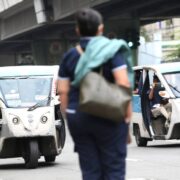A jobs and skills mismatch

The beginning of the “ber” months, which is often used as the starting point for the countdown to the Christmas season, may not be welcome news to thousands of recent graduates of colleges and universities in the country.
According to the Philippine Statistics Authority (PSA), the country’s unemployment rate in July rose to a one-year high of 4.3 percent, or the equivalent of 2.38 million jobless Filipinos. In the preceding month, the unemployment rate was 3.1 percent.
The PSA attributed the spike in unemployment to the increase in the number of young Filipinos, or those aged 15 to 24, who account for approximately 43 percent, or 1.02 million, of the total jobless population.
In the same period, there were 5.78 million Filipinos who were underemployed, or who wanted to have additional work hours or take on additional jobs to increase their take-home pay, but are unable to do so.
The high unemployment and underemployment rates reflect the state of the country’s economy.
When businesses are struggling financially or have scant optimism about their continued viability, there is hardly any incentive for them to increase their staff and incur additional operational costs. That would be like throwing good money after bad.
Then there is the perennial issue of mismatch between jobs and skills. This happens when job applicants do not have the skills needed for the position they have applied for, or their competencies exceed the qualifications for the job.
In the first instance, the employer has to make the most with what the applicant may be capable of doing and may, in the process, have to incur training costs to make him or her meet the requirements of the job.
In the second, the applicant is made to do work that has no relation to the course for which he or she spent several years in college, or the job could be handled by somebody with less educational qualifications. The money spent for higher education does not get its just rewards.
The choice of college courses for many Filipinos is often the result of family or social influence rather than practical considerations or a realistic assessment of the possible state of the job market after graduation.
If, for example, either parent or both are engaged in a particular field of work, some of their children would most likely follow in the footsteps of either one regardless of his or her competency for it.
Then there is the persuasive effect of what jobs appear to be in demand or popular at the time a decision has to be made on what college course to take.
Recall that sometime in the past when there was a reported demand for nurses in the United States, local nursing schools experienced a spike in their enrolment.
A similar surge in enrolment in computer or information technology (IT) courses happened in the early 2000s when digital technology was the “in” thing.
With the supply of nurses and IT graduates exceeding the demand for their services, many of them were forced to either accept jobs that were not within their competencies or seek employment elsewhere in the world.
In the case of the nurses, although there are vacancies in public and private hospitals, the low pay for long hours of work and exposure to health issues compel many of them to, for example, work at call centers where they can get higher pay.
For obvious financial considerations, college and universities cannot be expected to be conscious of or be pro-active in minimizing jobs and skills mismatches in the labor market.
As long as there are sufficient enrollees in the courses they offer, the ability of their graduates to find employment that match their education would be the least of their concerns.
Other than calling on parents to be more circumspect in the choice of college courses for their children, there is little that the government can do to avoid the jobs and skills mismatch.
With artificial intelligence (or AI) slowly gaining ground as an efficient and effective tool for business operation, that problem may take a more deleterious turn in the coming years.


















